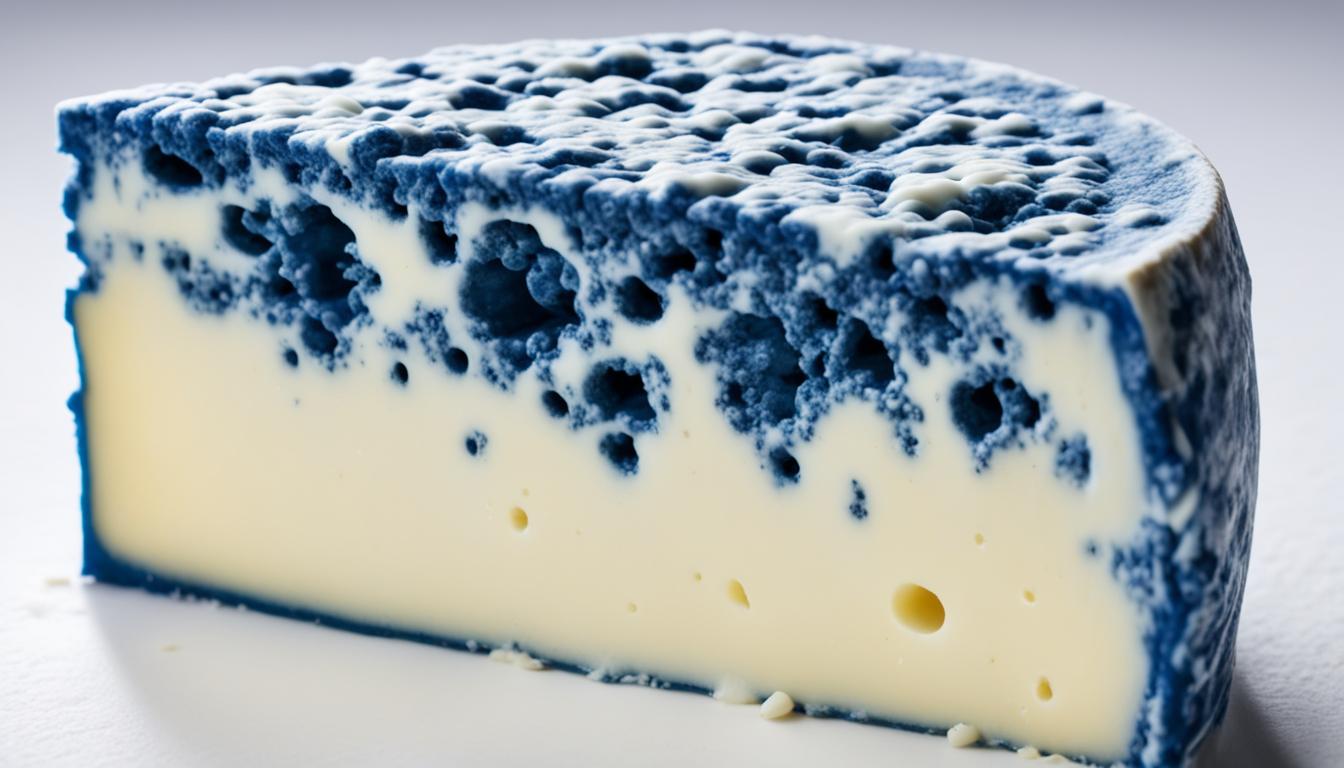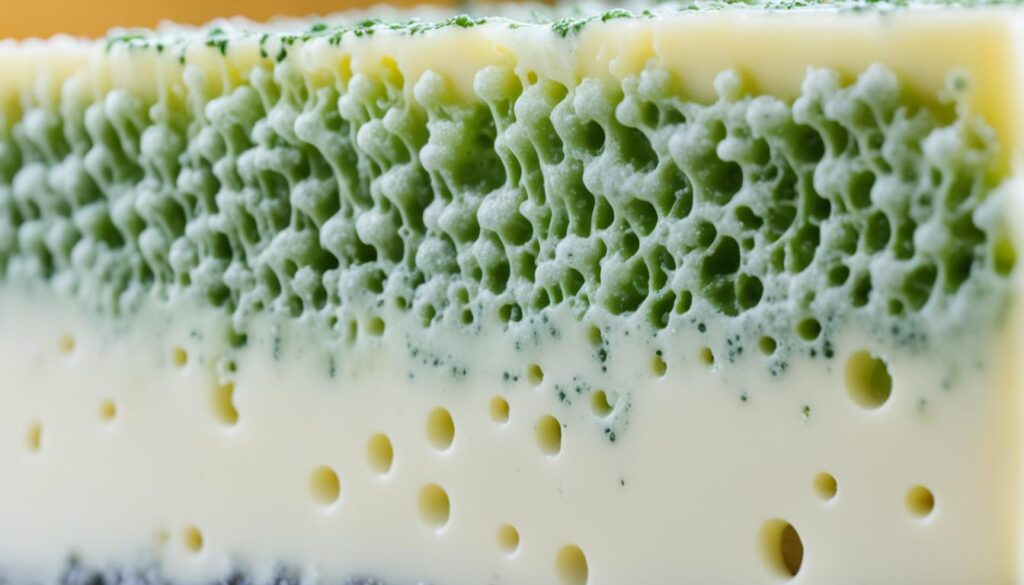
Is Cheese Mold? Unveiling the Facts and Myths
Cheese has been a beloved dairy staple for centuries, gracing our plates and tantalizing our taste buds. But when it comes to cheese, there’s one question that often arises: is cheese moldy? In this article, we will explore the fascinating world of cheese mold, separating the facts from the myths, and uncovering the truth behind this intriguing phenomenon.
Cheese production is a complex art, and mold plays a significant role in the creation of many cheese varieties. But what exactly is mold, and how does it contribute to the flavors and textures that we know and love? Join us as we delve into the intricate process of cheese production and discover how mold transforms milk into a diverse range of delectable cheeses.
However, amidst the allure of cheese mold, several myths and misconceptions have taken hold. Some might worry about the safety of consuming moldy cheese or question its impact on our health. In this article, we will debunk these common myths and provide science-backed information to set the record straight.
Key Takeaways:
- Cheese production involves the intentional use of mold, which contributes to the unique flavors and textures of different cheese varieties.
- Consuming moldy cheese is generally safe, as cheese manufacturers carefully monitor and control the presence of mold during production.
- Moldy cheese should not be confused with spoiled cheese, as the presence of certain molds is intentional and desirable in cheese-making processes.
- There are strict quality control measures in place to ensure that the mold present in cheese is safe for consumption.
- Understanding the facts about cheese mold allows us to appreciate the incredible variety and richness that cheese brings to our culinary experiences.
The Role of Mold in Cheese Production
In the world of cheese production, mold plays a crucial role in shaping the flavors, textures, and characteristics that make each cheese variety unique. Mold, a type of fungi, is intentionally introduced into the cheese-making process to enhance and differentiate the final product.
There are several types of mold that are commonly used in cheese production. One such mold is Penicillium roqueforti, which is responsible for the distinct blue veins found in blue cheeses like Roquefort and Gorgonzola. This mold contributes to the sharp and tangy flavor profiles often associated with these types of cheeses.
Another commonly used mold is Geotrichum candidum, which is used in the production of soft-ripened cheeses such as Brie and Camembert. This mold creates the characteristic bloomy rind on the cheese’s surface and adds a desirable mushroom-like flavor.
Not all molds used in cheese production are visible. Some molds, such as Penicillium candidum, are microscopic and develop on the cheese’s surface during the aging process. These molds contribute to the complex flavors and aromas found in aged and semi-soft cheeses like Camembert and Raclette.
Furthermore, mold can also act as a natural preservative in the cheese-making process. It helps to inhibit the growth of harmful bacteria and extend the shelf life of certain cheese varieties.
It’s important to note that not all molds are safe for consumption. Moldy cheeses undergo strict quality control checks to ensure they meet safety standards and maintain their quality. So while mold plays a crucial role in cheese production, consumers can enjoy their favorite cheese varieties with confidence.
Next, we will delve into the common myths surrounding cheese mold and debunk them with scientific evidence and expert insights. But before we do, let’s explore some interesting facts about cheese production.

Stay tuned for Section 3 where we debunk common myths and misconceptions about cheese mold!
Debunking Myths About Cheese Mold
When it comes to cheese mold, there are often misconceptions and myths that can cloud our understanding of this fascinating aspect of cheese production. In this section, we will dispel these myths and address the concerns surrounding cheese mold, shedding light on the truth backed by scientific evidence.
“Consuming moldy cheese can be harmful to your health.”
One common myth about cheese mold is that consuming moldy cheese can have negative health implications. However, this is not entirely accurate. While certain molds can produce toxins, the majority of molds used in cheese-making are safe for consumption and play a crucial role in developing the unique flavors and characteristics of different cheese types. It is important to remember that cheese producers follow strict hygiene and quality control standards to ensure the safety of their products.
“All mold found on cheese is harmful.”
Contrary to popular belief, not all molds found on cheese are harmful. In fact, many cheese varieties rely on specific molds to achieve their distinctive taste and texture. The mold used in the production of blue cheeses, such as Roquefort or Gorgonzola, is a prime example of this. These molds, which belong to the Penicillium family, contribute to the characteristic blue veins and earthy flavors in these cheeses.
It’s worth noting that cheese producers carefully control mold growth during the aging process to ensure the proper development of desirable flavors and to prevent the growth of harmful molds. As a consumer, it’s crucial to understand that mold is a natural and essential part of certain cheese varieties and that it is carefully managed to ensure safety and quality.
“Cutting off the moldy part makes the rest of the cheese safe to eat.”
Another common myth is that cutting off the moldy portion of cheese makes the remaining part safe to consume. While removing visible mold can reduce the risk of ingesting toxins, it’s important to understand that mold can penetrate beyond what is visible to the naked eye. Therefore, it is generally recommended to discard cheese that shows signs of mold growth, as it may indicate underlying contamination.
In conclusion, it is essential to separate fact from fiction when it comes to cheese mold. While some molds can be harmful, the majority used in cheese-making are safe and contribute to the unique flavors and textures we love. By understanding the role of mold in cheese production and following proper food handling practices, we can confidently enjoy a wide array of delicious cheeses without fear.

Conclusion
In conclusion, this article has shed light on the fascinating and complex world of cheese mold. We have explored its important role in the production of various cheese varieties, contributing to their unique flavors, textures, and characteristics. By understanding the science behind cheese mold, we can fully appreciate and enjoy the wide array of cheese options available to us.
Furthermore, we have debunked common myths and misconceptions surrounding cheese mold. Contrary to popular belief, not all mold found on cheese is harmful. In fact, many cheese types, such as blue cheese, rely on specific molds for their distinct taste and appearance. However, it is vital to exercise caution and make informed choices when it comes to consuming moldy cheese.
When selecting and consuming cheese, it is crucial to consider the safety considerations associated with mold. Always choose cheese from reputable sources and ensure it is properly stored and handled to minimize any potential health risks. By doing so, we can confidently savor the incredible world of cheese without compromising our well-being.
In conclusion, as cheese lovers, it is important to embrace the knowledge about cheese mold. Armed with the right information, we can truly understand and appreciate the craftsmanship and artistry that goes into creating our favorite cheese varieties. So go ahead, explore the world of cheese, and savor the delicious flavors that cheese mold contributes to this beloved dairy staple.




